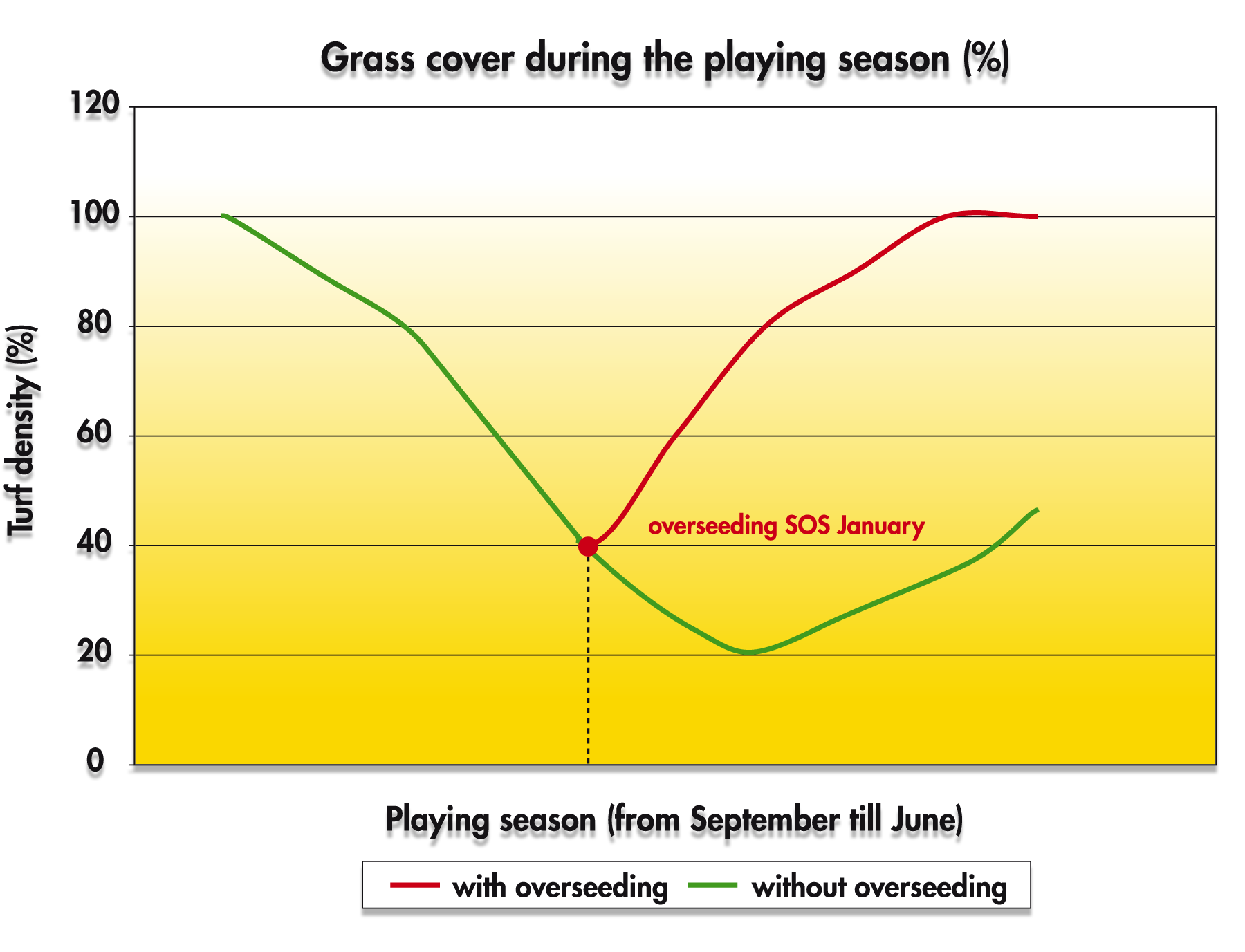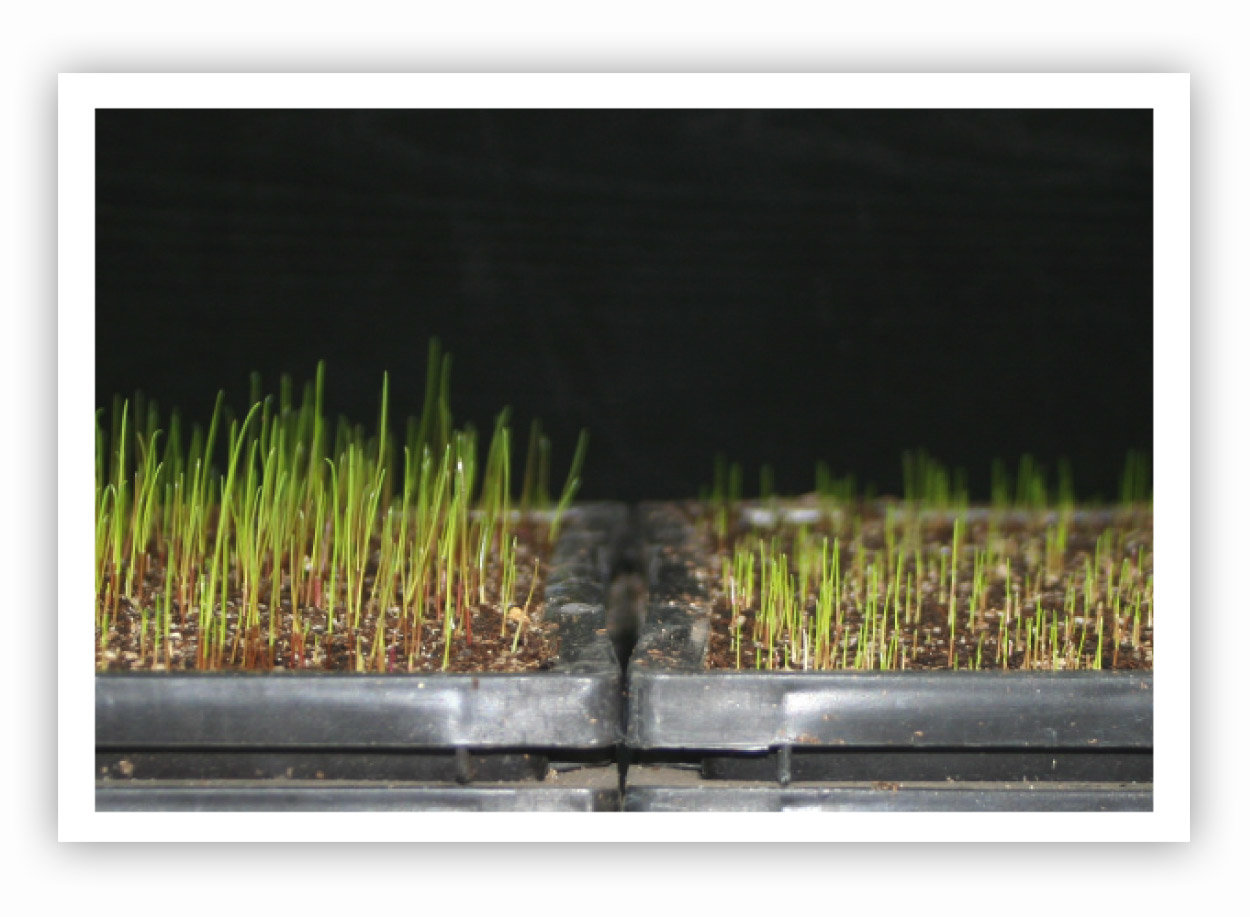The following graph shows how grass cover increases after overseeding with SOS®. It shows how grass cover deteriorates significantly in the first half of the season. Without overseeding, it first deteriorates even more before it begins to show a recovery.
SOS® gives the grass a boost and ensures that the grass cover is in top shape again within a short space of time.
Fast recovery at low cost
Planning football matches is difficult enough. It is even more difficult when you have to switch matches around because of poor quality pitches. SOS® guarantees the sward's recovery; it is a low-cost way to extend the playing season.
Is your sward in need of repair? Whether it is for the goal area in a stadium, the local amateur club’s penalty box or your local football pitch, go for SOS® now!






